Outer Space & Universe
Outer Space & Universe
Space, also known as outer space, is the near-vacuum between celestial bodies. It is where everything (all of the planets, stars, galaxies and other objects) is found.
On Earth, space begins at the Kármán line (100 km above sea level). This is where Earth's atmosphere is said to stop and outer space begins. This is not a firm boundary but is a convention used by scientists and diplomats.
Items in space are free to move back and forth; up and down; and left and right. These three dimensions are what make 3D space. Items also move forward through time, which is sometimes called the fourth dimension.
The majority of space contains very little matter and so most of it is a vacuum. Scientists do not know how big space is but we do know that space is extremely big, and is always expanding.
According to the big bang theory, all matter and energy in the Universe was compressed into a very small space. Then it exploded and started expanding. Space is still growing in size today; this means the distance from one galaxy to distant galaxies is getting longer.
Gravity is the force that keeps the Moon in orbit around the Earth and the planets in orbit around the Sun. Gravity can stretch and bend space similar to how a heavy ball placed on a stretched sheet of rubber will cause the rubber to stretch. The scientist who discovered that space can bend is named Albert Einstein. How gravity bends space is part of his theory of general relativity.
Astronauts, Cosmonauts, Taikonauts and Spationauts
An astronaut is any person who is trained by NASA to travel and perform tasks in space. Although the space traveler may not necessarily be a United States citizen, each astronaut does go through a rigorous training regiment by the National Aeronautics and Space Administration. Other space travelers go by other names then astronaut depending on their country of origin.
In the United States, astronaut is derived from the Greek words ástron (star) and nautis (sailor). While, in Russia, a space traveler goes by the name космонавт (English: cosmonaut), which is derived from the Greek words kosmos (universe) and nautis (sailor). Westerners call a space traveler from China a taikonaut, based on the 1998 writings of Chiew Lee Yik and Chen Lan where the term tàikōng (great emptiness), Chinese for “space”. In China, the term yuháng yuán (universe navigator) is used for space traveler.
Only the United States of America (United States), Russia (earlier, the Union of Soviet Socialist Republics), and the People’s Republic of China (China) have sent manned spacecraft into space. Other countries have assisted these countries by sending their own space travelers on space missions. For instance, a French space traveler is called a spationaut (from the French word spationaute), which is derived from the Latin spatium (space) and Greek nautis (sailor). (plural in Greek nautes = sailors)
-
01:17
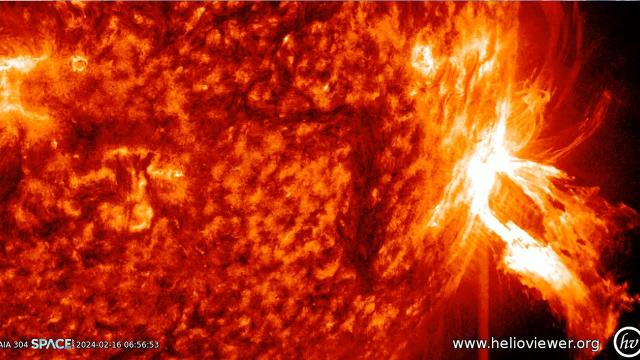
Sun blasts huge X2.5-class solar flare and spits plasma - See 4K spacecraft views
Added 117 Views / 0 LikesThe sun erupted with an X2.5-class solar flare on Feb. 16, 2024. NASA's Solar Dynamics Observatory captured the fireworks in multiple wavelengths. Credit: Credit: Space.com | footage courtesy: NASA / SDO and the AIA, EVE, and HMI science teams / helioview
-
01:04 New

Sun blasts huge X2.7-class solar flare! Biggest of 2025 to date
Added 6 Views / 0 LikesThe Sun unleashed an X2.7-class solar flare on May 14, 2025, the most powerful of 2025 to date. NASA's Solar Dynamics Observatory captured the fireworks in multiple wavelengths. Footage courtesy: NASA / SDO and the AIA, EVE, and HMI science teams, heliovi
-
00:58
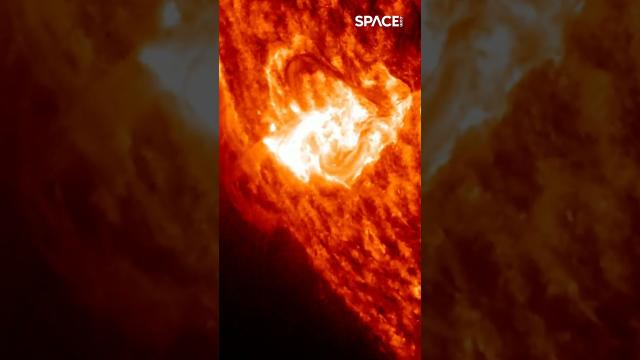
Sun blasts massive plasma plume #space #shorts
Added 93 Views / 0 LikesSunspot AR3835 erupted with an M3.4-class solar flare on Sept. 22, 2024. NASA's Solar Dynamics Observatory captured the fireworks. Footage courtesy: NASA / SDO and the AIA, EVE, and HMI science teams, helioviewer.org | edited by Space.com's Steve Spaleta
-
01:06
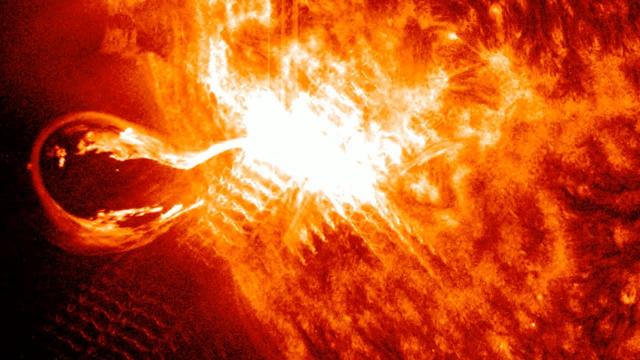
Sun blasts massive X4.5-class solar flare - See spacecraft views!
Added 94 Views / 0 LikesNASA's Solar Dynamics Observatory captured an X4.5-class solar flare on Sept. 14, 2024. See views in multiple wavelengths here. Footage courtesy: NASA / SDO and the AIA, EVE, and HMI science teams, helioviewer.org | edited by Space.com's [Steve Spaleta](h
-
01:20
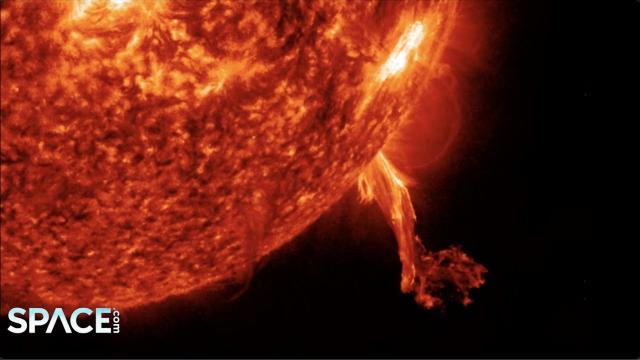
Sun blasts pair of strong flares, spits plasma
Added 214 Views / 0 LikesLarge sunspot AR3014 blasted an M5 and M1 class solar flare on May 19, 2022. Shortly after the flares, a large plasma burst was captured. Credit: Space.com | footage courtesy: NASA/SDO/ESA/helioviewer.org | edited by [Steve Spaleta](https://twitter.com/st
-
01:13
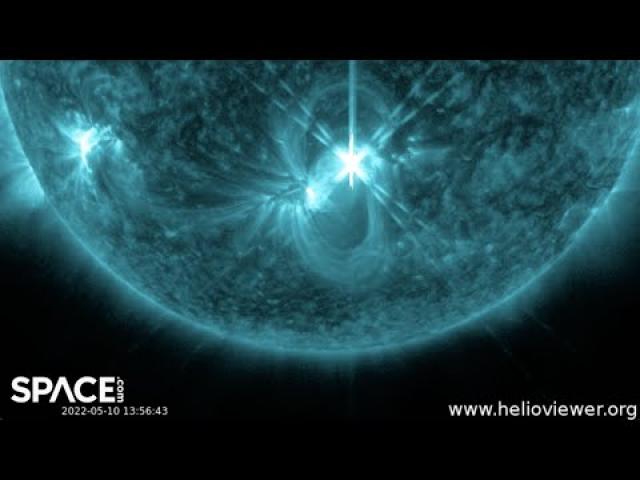
Sun blasts powerful Earth-directed X-flare! See spacecraft's view
Added 222 Views / 0 LikesEarth-directed Sunpsot AR3006 blasted an X1-class solar flare on May 10, 2022. NASA's Solar Dynamics Observatory captured it in multiple wavelengths. Credit: Space.com | footage courtesy: NASA/SDO/ESA/helioviewer.org | edited by [Steve Spaleta](https://tw
-
01:07
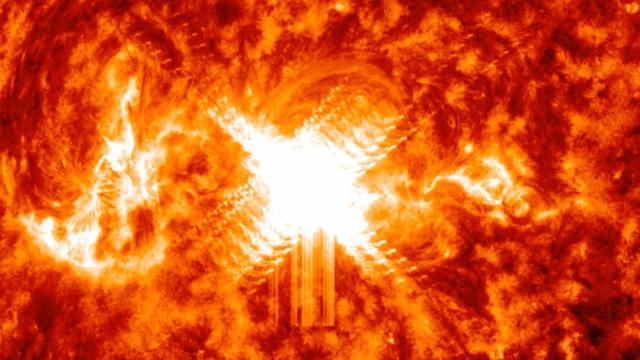
Sun blasts powerful Halloween x-flare! NASA spacecraft sees it
Added 89 Views / 0 LikesSunspot AR3878 erupted with an X2-class solar flare on Oct. 31, 2024. NASA's Solar Dynamics Observatory captured the fireworks. Footage courtesy: NASA / SDO and the AIA, EVE, and HMI science teams, helioviewer.org | edited by Space.com's [Steve Spaleta](h
-
01:04
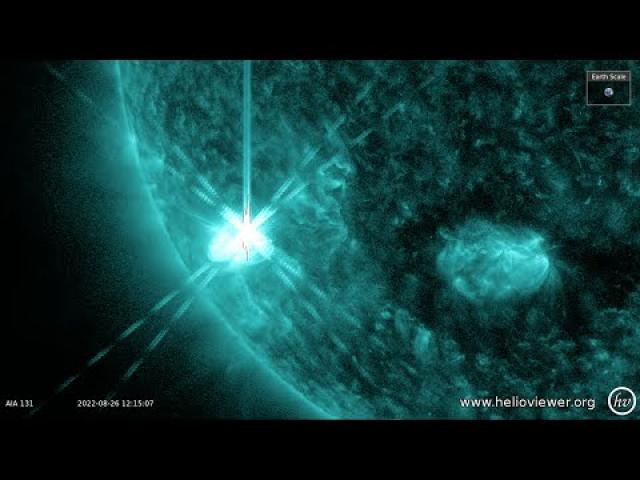
Sun blasts powerful m-class flares! NASA spacecraft captures fireworks
Added 199 Views / 0 LikesSunspot AR3089 erupted with a series of m-class flares that culminated with an M7-class flare on Aug. 26, 2022. NASA's Solar Dynamics Observatory captured the fireworks in multiple wavelengths. Credit: Space.com | footage courtesy: NASA/SDO/helioviewer.or
-
01:08
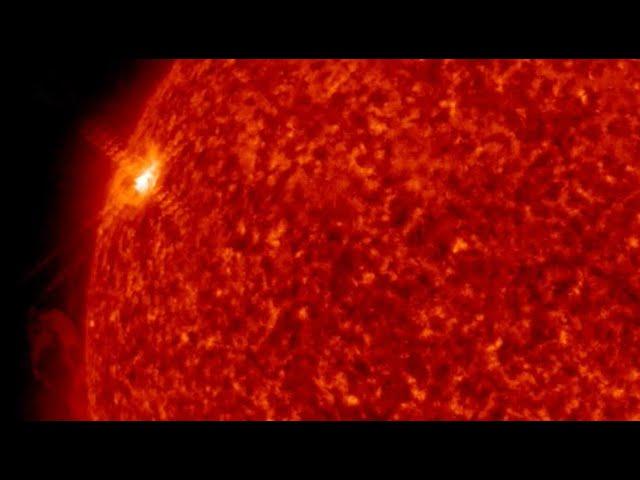
Sun blasts powerful M1-class flare, spacecraft watches
Added 313 Views / 0 LikesNew sunspot AR2911 made its presence known with an M1-class solar flare on Dec. 17, 2021. See footage of the fireworks from NASA's Solar Dynamics Observatory. Credit: Space.com | NASA/SDO/Science teams: AIA/EVE/HMI | produced & edited by [Steve Spaleta](h
-
01:04
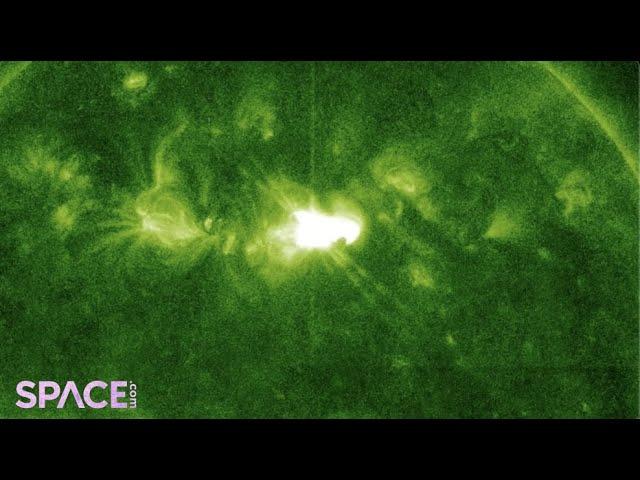
Sun blasts powerful M4 flare! See multiple wavelength views from space
Added 252 Views / 0 LikesNASA Solar Dynamics Observatory captured an M4 solar flare in multiple wavelengths on March 28, 2022. Credit: Space.com / footage courtesy: NASA/SDO / produced & edited by [Steve Spaleta](http://www.twitter.com/stevespaleta)
-
01:00
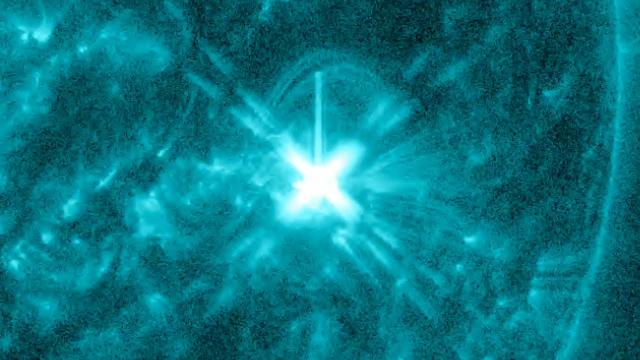
Sun blasts powerful M7.4-class flare! See sun observatory views
Added 120 Views / 0 LikesThe erupted with an M7.4-class solar flare on March 10, 2024. NASA's Solar Dynamics Observatory captured the fireworks in multiple wavelengths. Footage courtesy: NASA / SDO and the AIA, EVE, and HMI science teams / helioviewer.org
-
01:06
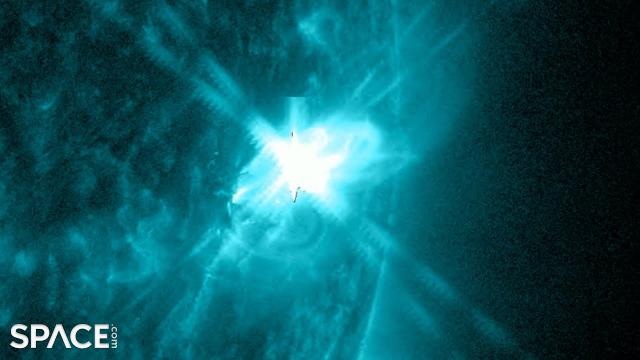
Sun blasts powerful M9.5-class solar flare - Spacecraft sees it
Added 127 Views / 0 LikesSunspot AR3654 erupted with an M9.5-class solar flare on April 30, 2024. NASA's Solar Dynamics Observatory captured the fireworks. [Full Story](https://www.space.com/near-x-class-solar-flare-april-30-2024-video)Credit: Credit: Space.com | footage courtesy
-
01:13
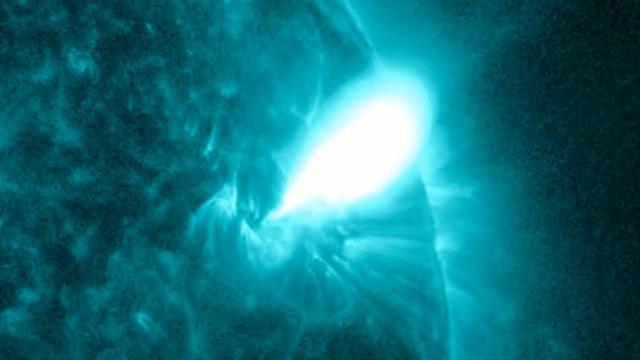
Sun blasts powerful X1.1-class flare! See spacecraft's view
Added 190 Views / 0 LikesSunspot AR3354 erupted with an X1.1-class solar flare on July 2, 2023. NASA's Solar Dynamics Observatory captured the fireworks in multiple wavelengths. "Extreme UV radiation from the flare caused a deep shortwave radio blackout over the Pacific Ocean." a
-
01:24
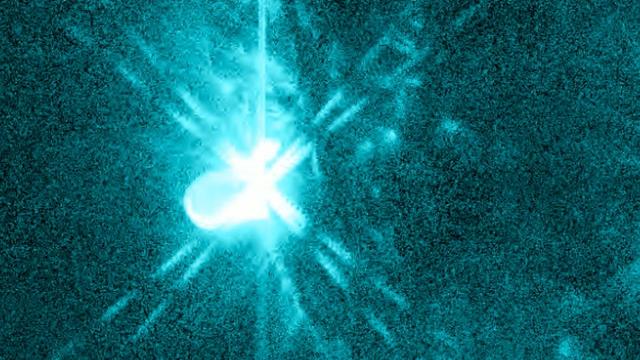
Sun blasts powerful X1.2 solar flare - Spacecraft view
Added 184 Views / 0 LikesSunspot AR3182 erupted with an X1.2 solar flare on Jan. 6, 2022. NASA's Solar Dynamics Observatory (SDO) captured the fireworks in multiple wavelengths. Credit: NASA/SDO/Helioviewer.org | edited by Space.com's [Steve Spaleta](https://twitter.com/stevespal
-
01:04 New
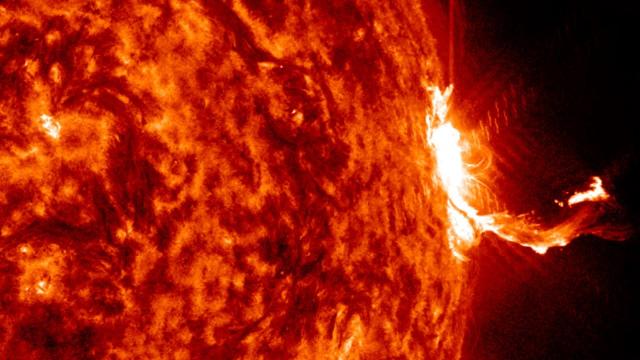
Sun blasts powerful X1.2-class solar flare - See spacecraft views
Added 12 Views / 0 LikesThe Sun unleashed an X1.2-class solar flare on May 13, 2025. NASA's Solar Dynamics Observatory captured the fireworks in multiple wavelengths. Footage courtesy: NASA / SDO and the AIA, EVE, and HMI science teams, helioviewer.org | edited by Space.com's St
-
01:00
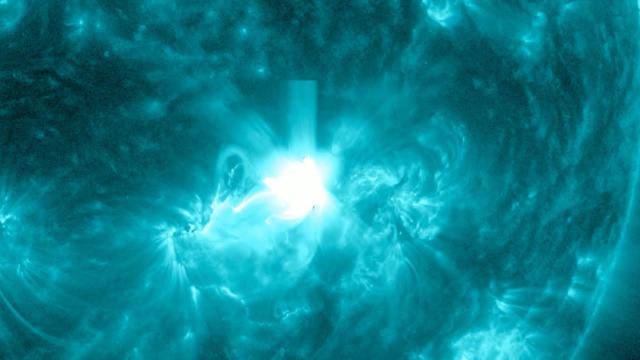
Sun blasts powerful X1.3 solar flare! Spacecraft sees it in multiple wavelengths
Added 102 Views / 0 LikesSunpot AR3777 unleashed an X1.3-class solar flare onb Aug. 8, 2024. NASA's Solar Dynamics Observatory captured the fireworks in multiple wavelengths. Footage courtesy: NASA / SDO and the AIA, EVE, and HMI science teams, helioviewer.org
-
01:07
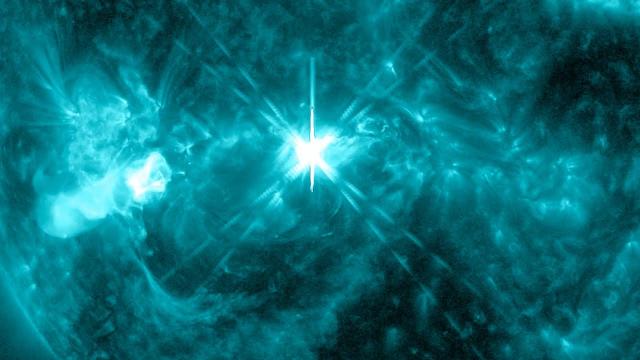
Sun blasts powerful X2 flare on day after US election
Added 93 Views / 0 LikesSunspot AR3883 erupted with an X2-class solar flare on Nov. 6, 2024. NASA's Solar Dynamics Observatory captured the fireworks. Footage courtesy: NASA / SDO and the AIA, EVE, and HMI science teams, helioviewer.org | edited by Space.com's Steve Spaleta (htt
-
01:08
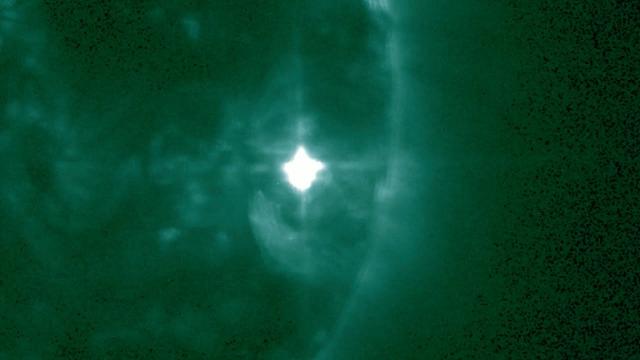
Sun blasts powerful X2 flare, NOAA satellite sees it!
Added 130 Views / 0 LikesSunspot 3912 erupted with an X2-class solar flare on Dec. 8, 2024. NOAA's GOES-R satellite captured footage of the blast in multiple wavelengths.
-
01:04
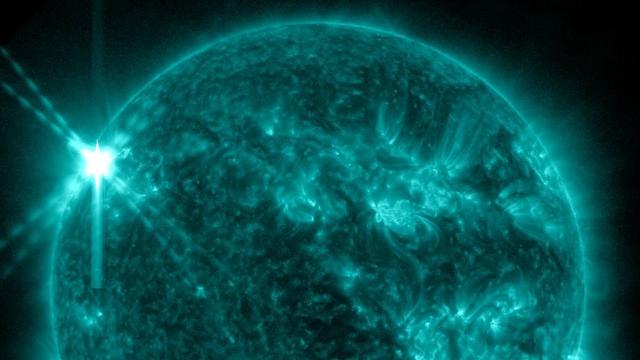
Sun blasts powerful X2-class solar flare, spacecraft sees it
Added 245 Views / 0 LikesSunspot AR3229 erupted with an X2-class solar flare on Feb. 17, 2023. NASA's Solar Dynamics Observatory captured the fireworks in multiple wavelengths. Credit: NASA/SDO | edited by Space.com's [Steve Spaleta](https://twitter.com/stevespaleta) Music: Jupit
-
01:19
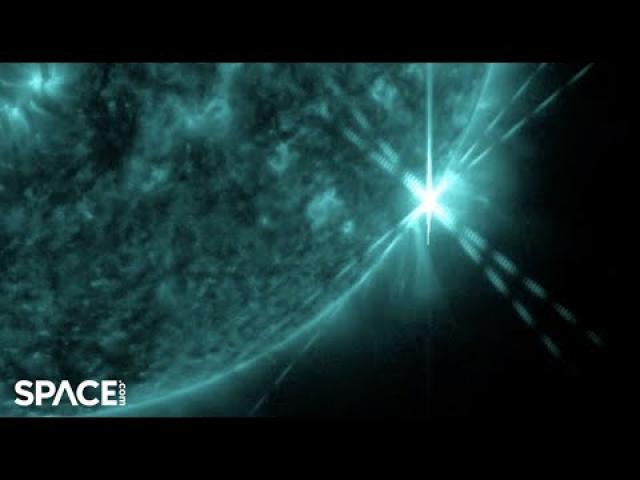
Sun blasts powerful X2.2 and M flares, spits fire
Added 252 Views / 0 LikesNASA's Solar Dynamics Observatory captured footage of sunspot AR2922 teeming with activity. An X2.2-class flare and a few m--class flares were observed on April 19-20, 2022Credit: Space.com / footage courtesy: NASA/SDO / produced & edited by Steve Spaleta
